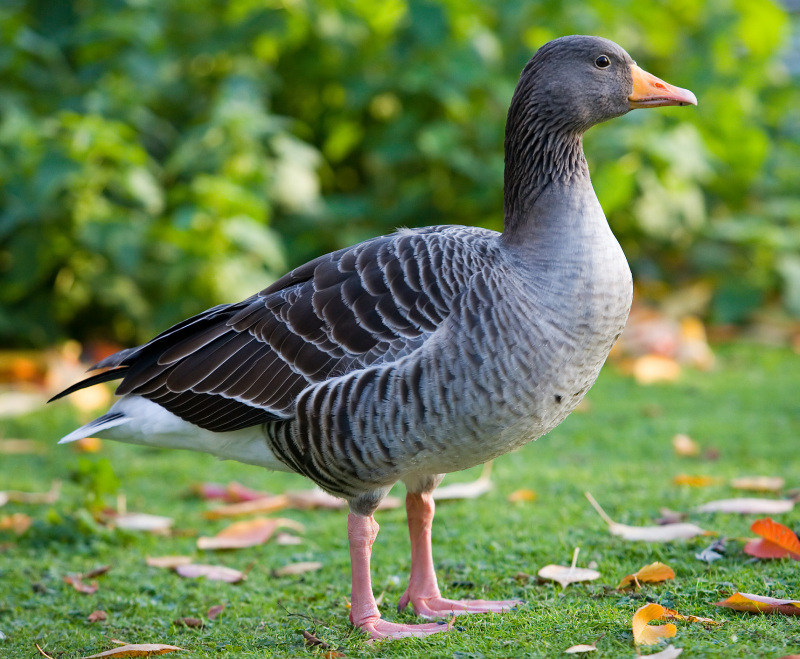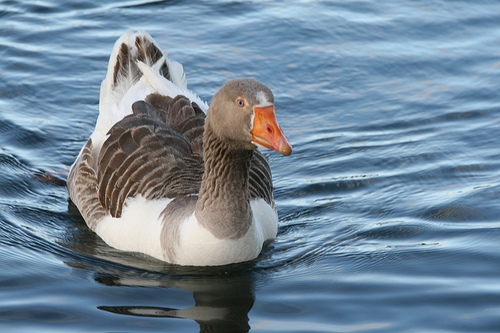Colours
Distinguishing features
The Greylag is the largest and bulkiest of the grey geese of the genus Anser. It has a rotund, bulky body, a thick and long neck, and a large head and bill. It has pink legs and feet, and an orange or pink bill.
The plumage is greyish-brown, with a darker head and paler belly with variable black spots. Its plumage is patterned by the pale fringes of its feathers. It has a white line bordering its upper flanks. Its coverts are lightly coloured, contrasting with its darker flight feathers. Juveniles differ mostly in their lack of a black-speckled belly. (Wikipedia)
Size
- From 74 cm to 91 cm (Length of specimen)
Weight
- From 2.16 kg to 4.56 kg
Wingspan
- From 147 cm to 180 cm
Synonyms
Distribution
Distribution and habitat preferences
This species is found throughout the Old World, apparently breeding where suitable localities are to be found in many European countries, although it no longer breeds in southwestern Europe. Eastwards, it extends across Asia to China. In North America, there are both feral domestic geese, which are similar to greylags, and occasional vagrants.
In Great Britain, their numbers had declined as a breeding bird, retreating north to breed wild only in the Outer Hebrides and the northern mainland of Scotland. However, during the 20th century, feral populations have been established elsewhere, and they have now re-colonised much of England. The breeding habitat is a variety of wetlands including marshes, lakes, and damp heather moors. (Wikipedia)
Local abundance
- Australia: They are a domestic bird in Australia, and some have escaped to be feral.

